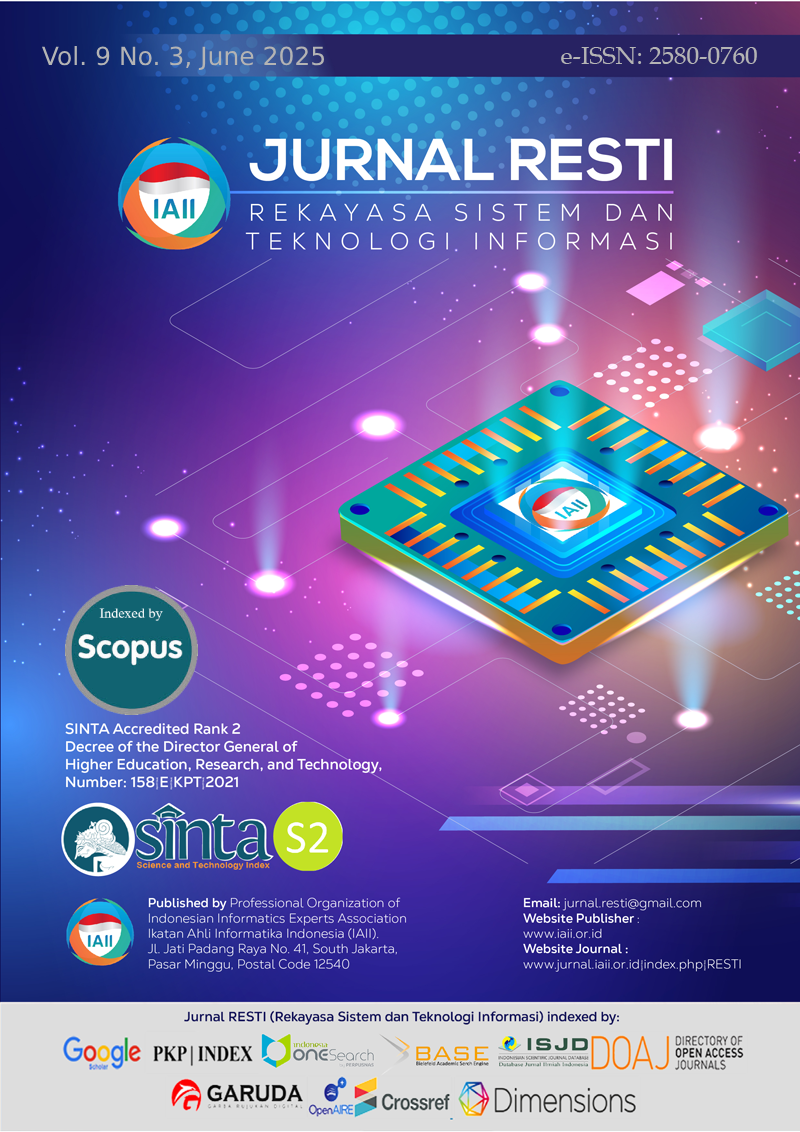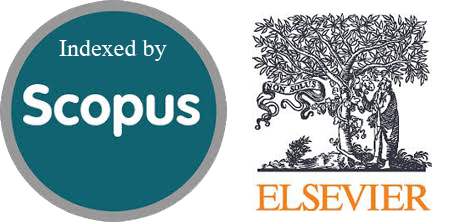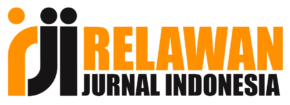Development of IoT-based Automatic Water Drainage System on Fishing Boat to Improve Operational Efficiency
Abstract
The profession of fishermen requires a reliable system to remove stagnant water from fishing boats, as manual drainage is time-consuming and inefficient. This study proposes an IoT-based automatic water drainage system without using an inverter or ultrasonic sensor, offering a cost-effective alternative. The system utilizes a water level sensor and a DC water pump, controlled via a smartphone application. The research model used is the Research and Development (R&D) model, through several stages, namely potential and problems, initial data needs, prototype creation, prototype validation, prototype revision, validation, implementation. Problems occur at the prototype stage, problems that must be revised include aspects of wiring, Power Suitability, Water Level Sensor Test, and the configuration of the relay used. The IOT-based automatic water drainage system can function based on the results of white-box testing including Hardware Implementation, Software Implementation, Implementation of Application Usage, and Automatic Drainage System Testing. This is indicated by the results of the Liquid Water Level Sensor Functionality test, DC Water Pump Functionality Test, Solar Panel and Battery Functionality Test, and IOT Functionality Test. IOT-based automatic water discharge systems on fishing boats are more efficient and cost-effective in the long run, although diesel engines offer more reliability under adverse weather conditions or in places with limited access to sunlight.
Downloads
References
M. U. Sohag and A. K. Podder, “Smart garbage management system for a sustainable urban life: An IoT based application,” Internet of Things (Netherlands), vol. 11, p. 100255, 2020, doi: 10.1016/j.iot.2020.100255.
J. Li and H. He, “Design of rice intelligent water-saving irrigation system based on agricultural internet of things,” J. Phys. Conf. Ser., vol. 1176, p. 052068, Mar. 2019, doi: 10.1088/1742-6596/1176/5/052068.
B. B. Sharma and N. Kumar, “IoT-Based Intelligent Irrigation System for Paddy Crop Using an Internet-Controlled Water Pump,” Int. J. Agric. Environ. Inf. Syst., vol. 12, no. 1, pp. 21–36, Jan. 2021, doi: 10.4018/IJAEIS.20210101.oa2.
H. Kopetz and W. Steiner, “Internet of Things,” in Real-Time Systems, Cham: Springer International Publishing, 2022, pp. 325–341. doi: 10.1007/978-3-031-11992-7_13.
Y. Perwej, K. Haq, F. Parwej, and M. M., “The Internet of Things (IoT) and its Application Domains,” Int. J. Comput. Appl., vol. 182, no. 49, pp. 36–49, 2019, doi: 10.5120/ijca2019918763.
Dwi Nurul Huda, T. Adyatma, and Z. Zulfachmi, “Pengembangan Aplikasi E-Money Dengan Pemanfaatan Payment Gateway Berbasis Android (Studi Kasus Sekolah Tinggi Teknologi Indonesia Tanjungpinang),” J. Bangkit Indones., vol. 11, no. 2, pp. 28–36, Oct. 2022, doi: 10.52771/bangkitindonesia.v11i2.212.
T. Ch. Singh, K. Srinivas Rao, P. Srinath Rajesh, and G. R. K. D. Satya Prasad, “Waste water-based pico-hydro power for automatic street light control through IOT-based sensors in smart cities: A pecuniary assessment,” in Artificial Intelligence and Machine Learning in Smart City Planning, Elsevier, 2023, pp. 87–99. doi: 10.1016/B978-0-323-99503-0.00010-7.
S. Kang, D. S. K. David, M. Yang, Y. C. Yu, and S. Ham, “Energy-efficient ultrasonic water level detection system with dual-target monitoring,” Sensors, vol. 21, no. 6, pp. 4–6, 2021, doi: 10.3390/s21062241.
R. Tawalbeh, F. Alasali, Z. Ghanem, M. Alghazzawi, A. Abu-Raideh, and W. Holderbaum, “Innovative Characterization and Comparative Analysis of Water Level Sensors for Enhanced Early Detection and Warning of Floods,” J. Low Power Electron. Appl., vol. 13, no. 2, 2023, doi: 10.3390/jlpea13020026.
T. S. R. Pereira, T. P. de Carvalho, T. A. Mendes, and K. T. M. Formiga, “Evaluation of Water Level in Flowing Channels Using Ultrasonic Sensors,” Sustain., vol. 14, no. 9, pp. 1–20, 2022, doi: 10.3390/su14095512.
Sugiono, Metode penelitian dan pengembangan (research and development/R&D), 4th ed. Bandung: Alfabeta, 2019.
D. Asri Yana Vita, R. Raihan, and Z. Zulfachmi, “Implementasi Metode Scrum pada Transformasi Bisnis Lokal UMKM Tanjungpinang,” J. Bangkit Indones., vol. 12, no. 2, pp. 46–52, Oct. 2023, doi: 10.52771/bangkitindonesia.v12i2.249.
F. I. Pasaribu, N. Evalina, and P. Harahap, “Inverator Starting Energy Saver Design For Electric Power Efficiency In Water Pumps,” J. Electr. Technol. UMY, vol. 5, no. 1, p. PRESS, Jul. 2021, doi: 10.18196/jet.v5i1.12096.
Zulfachmi, Wanhendra, and D. Saputra, “Sistem Pengendali Otomatis Debit Air Pada Simulasi Bendungan Menggunakan Mikrokontroler Atmega 32 Dan Komunikasi Serial,” J. Bangkit Indones., vol. 9, no. 1, pp. 13–17, Mar. 2020, doi: 10.52771/bangkitindonesia.v9i1.111.
M. MOLENDA and D. PŁONKA, “Application of the indicator analysis to assess and improve the quality of the assembly process of telecommunications installations – a case study,” Sci. Pap. Silesian Univ. Technol. – Organ. Manag. Ser., vol. 2020, no. 148, pp. 511–523, 2020, doi: 10.29119/1641-3466.2020.148.37.
B. A. Bhayo, H. H. Al-Kayiem, and S. I. Gilani, “Assessment of standalone solar PV-Battery system for electricity generation and utilization of excess power for water pumping,” Sol. Energy, vol. 194, pp. 766–776, Dec. 2019, doi: 10.1016/j.solener.2019.11.026.
L. Schenato, J. P. Aguilar-Lopez, A. Galtarossa, A. Pasuto, T. Bogaard, and L. Palmieri, “A Rugged FBG-Based Pressure Sensor for Water Level Monitoring in Dikes,” IEEE Sens. J., vol. 21, no. 12, pp. 13263–13271, Jun. 2021, doi: 10.1109/JSEN.2021.3067516.
Q. Li, D. H. Wu, D. Z. Yang, M. H. Fei, Y. Song, and Y. Liu, “Design and Realization of Fully Automatic Pump Performance Test System,” Int. J. Eng. Res. Africa, vol. 69, pp. 109–124, May 2024, doi: 10.4028/p-MX1eNP.
S. Marchal, M. Miettinen, T. D. Nguyen, A.-R. Sadeghi, and N. Asokan, “AuDI: Toward Autonomous IoT Device-Type Identification Using Periodic Communication,” IEEE J. Sel. Areas Commun., vol. 37, no. 6, pp. 1402–1412, Jun. 2019, doi: 10.1109/JSAC.2019.2904364.
S. S. Chandel, M. Nagaraju Naik, and R. Chandel, “Review of solar photovoltaic water pumping system technology for irrigation and community drinking water supplies,” Renew. Sustain. Energy Rev., vol. 49, pp. 1084–1099, Sep. 2015, doi: 10.1016/j.rser.2015.04.083.
M. Suryanegara, D. A. Prasetyo, F. Andriyanto, and N. Hayati, “A 5-Step Framework for Measuring the Quality of Experience (QoE) of Internet of Things (IoT) Services,” IEEE Access, vol. 7, pp. 175779–175792, 2019, doi: 10.1109/ACCESS.2019.2957341.
P. P. A. Santoso, D. Mahmuda, and I. Sanubary, “Pengaruh Jumlah Panel dan Aki terhadap Waktu Operasi Pompa Air pada Sistem Hidroponik Tenaga Surya,” G-Tech J. Teknol. Terap., vol. 7, no. 3, pp. 827–836, 2023, doi: 10.33379/gtech.v7i3.2525.
Y. Nurhadryani, W. Wulandari, and M. N. F. Mastika, “Vehicle Detection Monitoring System using Internet of Things,” J. RESTI (Rekayasa Sist. dan Teknol. Informasi), vol. 6, no. 5, pp. 749–760, Oct. 2022, doi: 10.29207/resti.v6i5.4082.
Y. Lianawati, C. Mahendra, G. M. Sugianto, S. J. Mendrofa, A. L. Setiani, and B. Y. Baraga, “Sistem Monitoring dan Controlling ‘Smart waste’ berbasis Internet of Things menggunakan modul ESP 32,” J. Telecommun. Electron. Control Eng., vol. 6, no. 2, pp. 163–175, 2024, doi: 10.20895/jtece.v6i2.1400.
P. K. D. Pramanik et al., “Power Consumption Analysis, Measurement, Management, and Issues: A State-of-the-Art Review of Smartphone Battery and Energy Usage,” IEEE Access, vol. 7, pp. 182113–182172, 2019, doi: 10.1109/ACCESS.2019.2958684.
B. Su and S. Wang, “An agent-based distributed real-time optimal control strategy for building HVAC systems for applications in the context of future IoT-based smart sensor networks,” Appl. Energy, vol. 274, p. 115322, Sep. 2020, doi: 10.1016/j.apenergy.2020.115322.
Copyright (c) 2025 Jurnal RESTI (Rekayasa Sistem dan Teknologi Informasi)

This work is licensed under a Creative Commons Attribution 4.0 International License.
Copyright in each article belongs to the author
- The author acknowledges that the RESTI Journal (System Engineering and Information Technology) is the first publisher to publish with a license Creative Commons Attribution 4.0 International License.
- Authors can enter writing separately, arrange the non-exclusive distribution of manuscripts that have been published in this journal into other versions (eg sent to the author's institutional repository, publication in a book, etc.), by acknowledging that the manuscript has been published for the first time in the RESTI (Rekayasa Sistem dan Teknologi Informasi) journal ;








